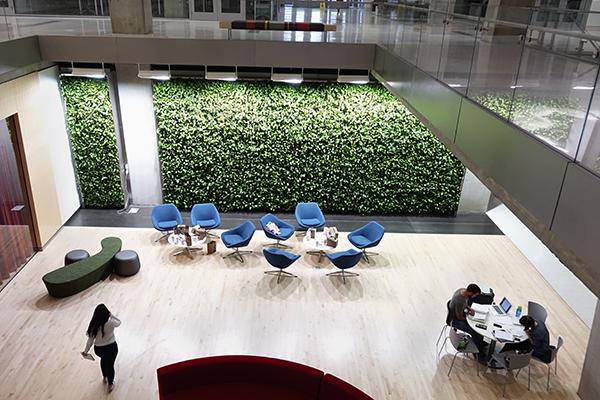Students will get to learn about growing the world’s food supply this spring.
GW will offer two courses in sustainable urban planning and food growth, the University’s top sustainability leaders announced last week. Students can enroll in the classes, which will be taught by “cross-disciplinary” faculty members, Executive Director of Sustainability Kathleen Merrigan said.
The two courses, called The Sustainable Plate and The Sustainable City, will look at growing food to support swelling populations and building cities in an “urbanizing world,” Merrigan said in an email.
“GW works to integrate sustainability into practice, research, teaching and public engagement,” Merrigan said. “A cross-disciplinary team of faculty will develop and teach both courses.”
The course additions are the latest growth in the sustainability program. Both three-credit courses will count toward GW’s 18-credit sustainability minor, which launched in 2012, Merrigan said.
GW’s sustainability curriculum includes graduate degrees and certificates in sustainable urban planning and sustainable landscaping. University officials are also designing a master’s degree in sustainable governance.
Cities like the District are placing a higher emphasis on sustainable practices as their downtown and metropolitan areas expand. The city has more than 18,000 volunteers who have helped improve the environment, according to its 2015 sustainability report.
Robert Adams, an architecture and urban planning professor at the University of Michigan, said there has been an uptick in city development across the world, especially in Asia, to accommodate swelling populations. Adams has spent more than a decade studying Beijing’s urban innovation.
“In a place like Beijing, urbanization happens through the dismantling of certain parts of the city or unmaking the city,” he said.
But the next step is rebuilding the city with key developments in mind, like how to continue to grow enough food within the city to keep up with the level of demand. Adams added that the current pressure for cities to accommodate more people and services has pushed urban planners and architects to work faster than before.
“There’s no time to theorize or to reflect on what’s being made [in cities],” he said. “The demand and pressure to get stuff done outweighs or outruns or outpaces any critical conversation.”







